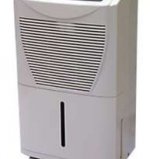
 Summary: This project aims to help define condensation, diagnose whether it is rising damp or condensation, explain the causes of window condensation and wet walls, diagnose symptoms, help you control condensation with a guide to treatment and cures for your problems, and stop condensation using paints, wallpapers, coatings and products.
Summary: This project aims to help define condensation, diagnose whether it is rising damp or condensation, explain the causes of window condensation and wet walls, diagnose symptoms, help you control condensation with a guide to treatment and cures for your problems, and stop condensation using paints, wallpapers, coatings and products.
In the first part of this project we will run through a definition of condensation so that you know what you are dealing with! We are often asked for condensation solutions and obviously if you have a condensation problem in your home you want to know how to avoid it, and how to treat the damage that is caused by condensation on walls, windows, curtains and even clothes.
If at any point you feel that additional expert advice is required, we work closely with a company called Property Repair Systems and they have agreed to supply free help and advice for all our users. Just give them a call on 80.
Condensation problems on windows and recesses create damp conditions causing flaking paint and black mould on window frames and walls
What is Condensation and How Does it Form?
However, before we explain all that, we first want to define condensation. ? Basically it is when water, which is already in the air, settles on a colder surface and makes it damp or wet. Over time this moisture can lead to damage by peeling paint off windows, and walls. This window in Bath, Somerset was in a house we were called to a few years ago, it was fitted with metal windows which are notorious for condensation, and you can see what happened to the paintwork!
Basically it is when water, which is already in the air, settles on a colder surface and makes it damp or wet. Over time this moisture can lead to damage by peeling paint off windows, and walls. This window in Bath, Somerset was in a house we were called to a few years ago, it was fitted with metal windows which are notorious for condensation, and you can see what happened to the paintwork!
Condensation on windows causes flaking paint around window frames and windowsills. Flaking paint is a common symptom of condensation
 The damp conditions also encourage the growth of mould spores which thrive in these moist places. This often leads to black sooty mould on windows, but you might also notice mould on walls, and even on curtains, where condensation has been allowed to build up over time.
The damp conditions also encourage the growth of mould spores which thrive in these moist places. This often leads to black sooty mould on windows, but you might also notice mould on walls, and even on curtains, where condensation has been allowed to build up over time.
All air contains water vapour, but the amount of water air can hold is determined by the temperature of that air. This ratio is called the ‘relative humidity’. Hot air is able to carry much more moisture than cold air, so as the temperature of air rises it is able to hold a greater volume of water. The water comes from everyday activities including, bathing, cooking and washing. Even our breathing causes condensation, and this is why car windows steam up when you sit with the windows closed and the fan off.













